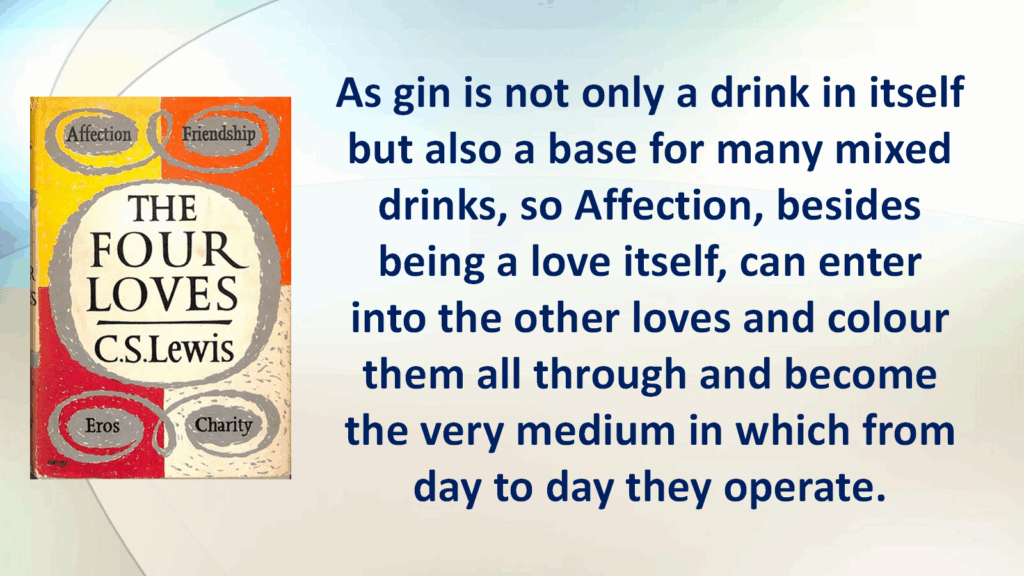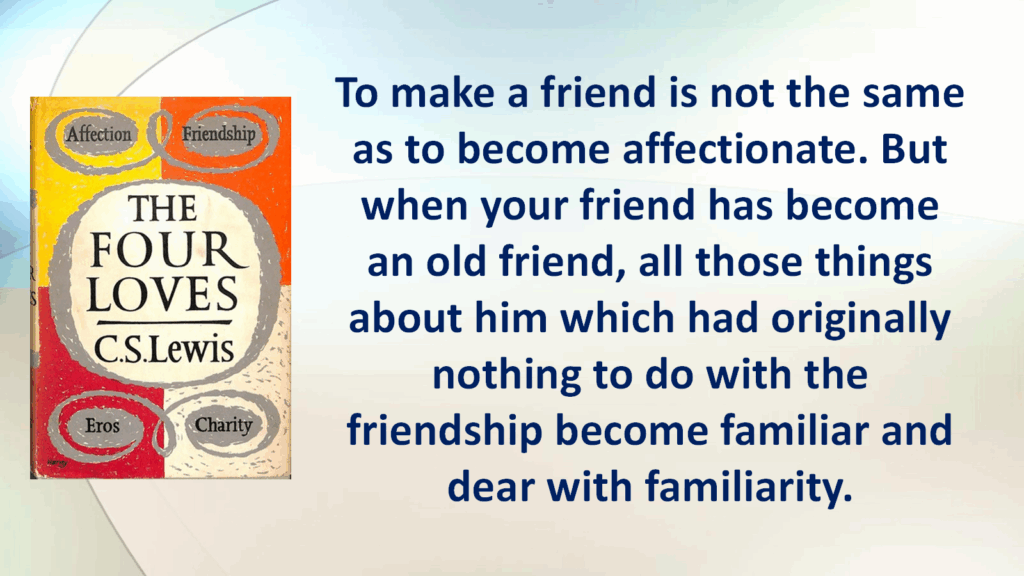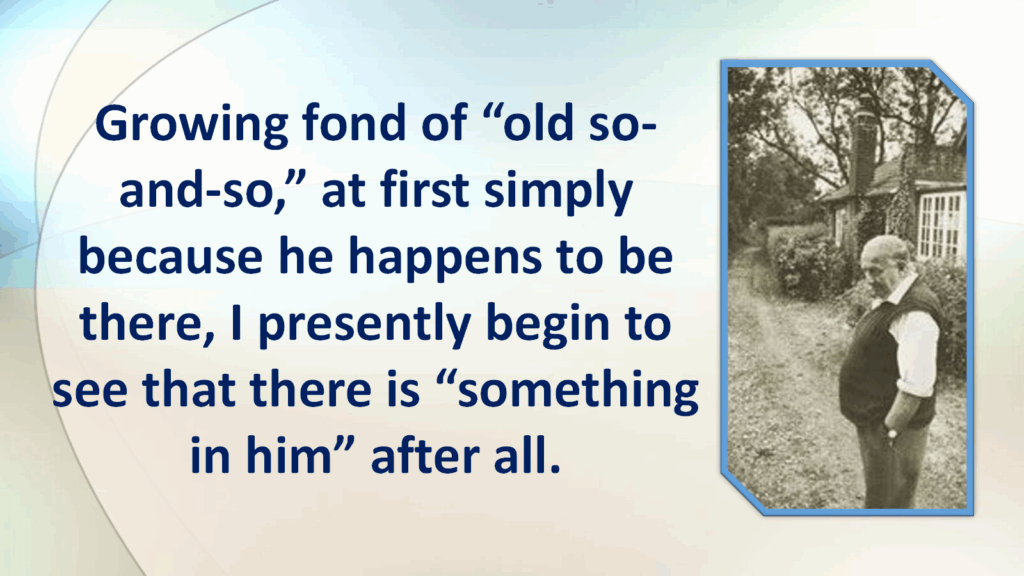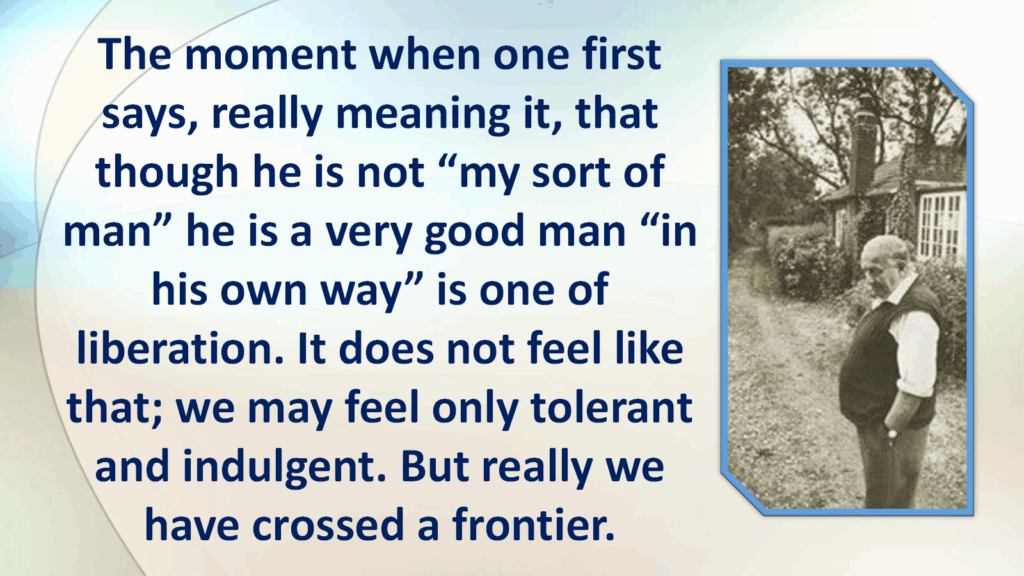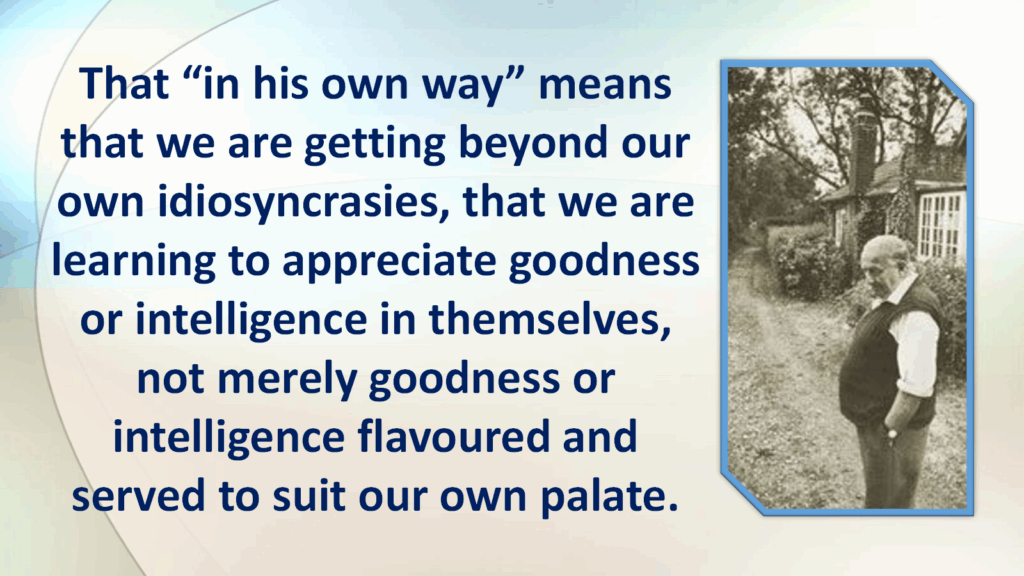The first of the “four loves” that C. S. Lewis explains in his book with that title is Affection.
The family is where affection may begin, but Lewis extends it further. “Almost anyone can become an object of Affection,” he notes, and then adds that one can also include “the ugly, the stupid, even the exasperating.”
It ignores the barriers of age, sex, class, and education. It can exist between a clever young man from the university and an old nurse, though their minds inhabit different worlds. It ignores even the barriers of species. We see it not only between dog and man but, more surprisingly, between dog and cat.
One of the key ingredients for Affection to become manifest, according to Lewis, is that its objects have to be familiar. He points to a couple of examples: a dog will bark at a stranger who has never done it any harm, while wagging its tail for someone it knows even if that person has never treated it well; a child will “love a crusty old gardener who has hardly ever taken any notice of it” but shy away from a stranger who is trying to get to know it. “But it must be an old gardener, one who has ‘always’ been there—the short but seemingly immemorial ‘always’ of childhood.”
When Lewis then describes Affection as “homely,” he is not using that word the way most people interpret it today: it doesn’t mean unattractive; rather, it means oriented toward the home, the private part of our lives.
Affection would not be affection if it was loudly and frequently expressed; to produce it in public is like getting your household furniture out for a move. It did very well in its place, but it looks shabby or tawdry or grotesque in the sunshine. Affection almost slinks or seeps through our lives. It lives with humble, un-dress, private things; soft slippers, old clothes, old jokes, the thump of a sleepy dog’s tail on the kitchen floor, the sound of a sewing-machine, a gollywog [doll] left on the lawn.
Yet, as private as Affection seeks to be, it can infiltrate the other loves.
Because Affection can be broadly applied to many types of people—even those one might ordinarily not feel close to—an appreciation of those very different people can develop over time. In his domestic life, Lewis had a gardener who lived on his property named Fred Paxford. They lived in completely opposite intellectual worlds. Paxford also had some eccentricities that could have caused friction, but Lewis had a deep affection for the man. In the chapter on Affection, Lewis talks about a type of person who might have been inspired by Paxford, so I chose to use a photo of Paxford for Lewis’s explanation.
“Dogs and cats should always be brought up together,” said someone, “it broadens their minds so.” Affection broadens ours; of all natural loves, it is the most catholic, the least finical, the broadest. …
The truly wide taste in humanity will … find something to appreciate in the cross-section of humanity whom one has to meet every day. In my experience it is Affection that creates this taste, teaching us first to notice, then to endure, then to smile at, then to enjoy, and finally to appreciate, the people who “happen to be there.”
Made for us? Thank God, no. They are themselves, odder than you could have believed and worth far more than we guessed.
At this point in Lewis’s chapter, Affection is pointedly positive. Yet, as he does throughout The Four Loves, he issues warnings for how each love can go astray. How can Affection be a negative? Lewis’s concerns about that will be the subject of the next post.


